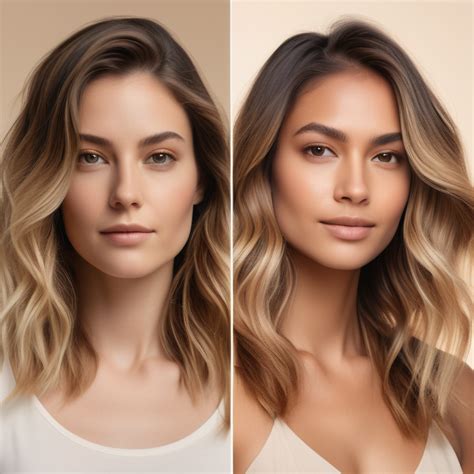Introduction
Balayage and highlights are two popular hair coloring techniques that can add depth, dimension, and vibrancy to your locks. While they share similarities, there are also some key differences between the two techniques. In this article, we’ll explore the 5 main differences between balayage and highlights, so you can make an informed decision about which technique is right for you.

1. Application Method
Balayage:
* Involves hand-painting hair color onto the hair’s surface in a sweeping motion.
* Creating a natural-looking, sun-kissed effect.
* Allows for greater customization and control over the color placement.
Highlights:
* Involves using foils or a cap to separate sections of hair.
* Color is applied to these separated sections, creating a more defined and structured look.
2. Placement
Balayage:
* Typically applied to the mid-lengths and ends of the hair.
* Creates a blended, gradual transition from root to tip.
* Gives the illusion of effortless, sun-kissed highlights.
Highlights:
* Can be placed anywhere on the hair, from the roots to the ends.
* Creates more precise and defined streaks of color.
3. Maintenance
Balayage:
* Requires less maintenance than highlights.
* The blended roots make it less noticeable as the hair grows out.
* Touch-ups are typically needed every 12 to 16 weeks.
Highlights:
* Requires more frequent touch-ups, as the defined streaks of color become more visible with hair growth.
* Touch-ups are typically needed every 8 to 12 weeks.
4. Price
Balayage:
* Generally more expensive than highlights due to the time and skill required for the hand-painting technique.
* Costs vary depending on the length of the hair, the desired color, and the stylist’s experience.
Highlights:
* Typically less expensive than balayage, as the foil or cap application is less labor-intensive.
5. Trendiness
Balayage:
* Has been a popular trend for several years and remains one of the most requested hair coloring techniques.
* Offers a natural, effortless look that is both versatile and stylish.
Highlights:
* Have been around for decades and can create a more dramatic, structured look.
* Can be customized to suit a variety of hair types and styles, but may require more maintenance.
Which Technique Is Right for You?
The best hair coloring technique for you depends on your personal preferences and hair goals. Consider the following factors when making your decision:
-
Low Maintenance: Balayage offers lower maintenance and is ideal for those who prefer a more blended, natural look.
-
High-Impact Color: Highlights create more defined and dramatic streaks of color, suitable for those who want a more striking look.
-
Budget: Balayage typically costs more than highlights, while highlights are more budget-friendly.
Conclusion
Whether you opt for balayage or highlights, both techniques can transform your hair and enhance your overall look. By understanding the key differences between the two, you can make an informed decision that aligns with your hair goals and lifestyle. Embrace the world of hair coloring and find your perfect match for radiant, eye-catching locks!
Additional Information
Table 1: Comparison of Application Methods
| Feature | Balayage | Highlights |
|---|---|---|
| Method | Hand-painting | Foils or cap |
| Effect | Natural, blended | Precise, defined |
| Customization | High | Medium |
Table 2: Comparison of Placement
| Feature | Balayage | Highlights |
|---|---|---|
| Typical Placement | Mid-lengths and ends | Anywhere on the hair |
| Root Growth | Less noticeable | More noticeable |
| Illusion | Sun-kissed highlights | Defined streaks of color |
Table 3: Comparison of Maintenance
| Feature | Balayage | Highlights |
|---|---|---|
| Frequency | Every 12-16 weeks | Every 8-12 weeks |
| Blended Roots | Yes | No |
| Cost | Higher | Lower |
Table 4: Comparison of Trendiness
| Feature | Balayage | Highlights |
|---|---|---|
| Popularity | High, trending | Established, classic |
| Versatility | High | Medium |
| Style | Natural, effortless | Dramatic, structured |
